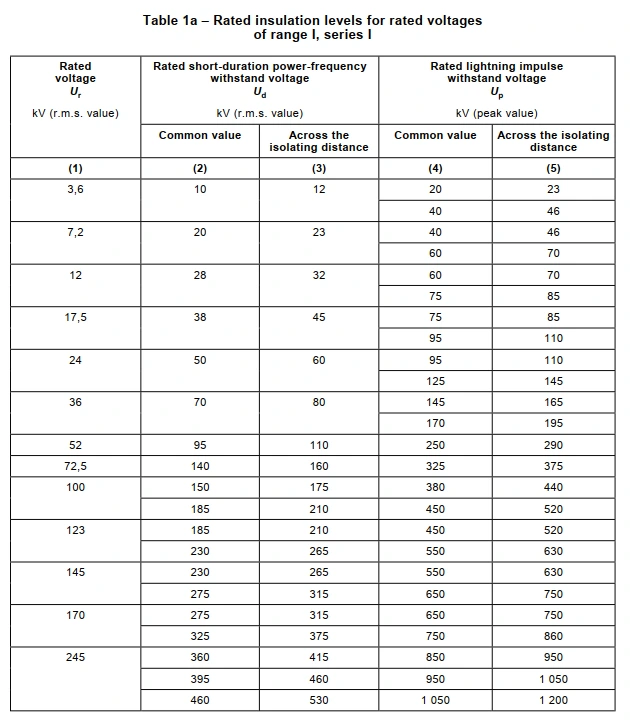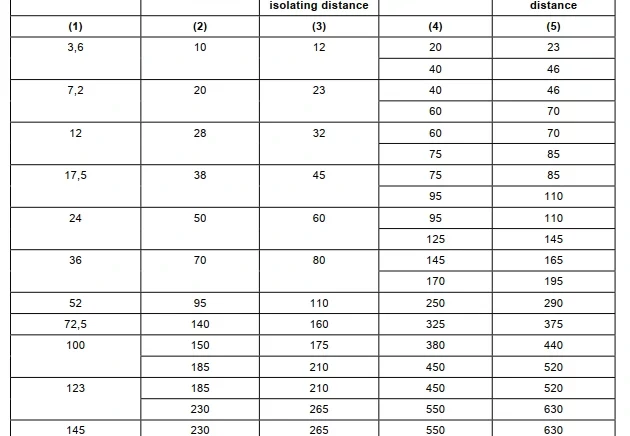Note: This is will be part 3 and last part of the selection of power circuit breaker rating series. Links to Part 1 and Part 2.
Rated Insulation Level / Dielectric withstand capability / Rated Dielectric Strength
Note: In IEEE C37.100.1 this is called rated insulation level but rated dielectric withstand capabilities in IEEE C37.04.
This group of ratings is specified by a series of tests, each relating to typical power system overvoltage transients, that a breaker needs to pass. These tests include conditions such as low-frequency overvoltage (nominal frequency, wet and dry conditions), lightning impulse (basic impulse level), chopped wave, bias test, and switching impulse.
Rated insulation levels of switchgears and controlgears
IEC 60694 provides the rated insulation levels of switchgears and controlgears. In the tables provided in the standard, the withstand voltage applies at the standardized reference atmosphere (temperature, pressure and humidity) specified in IEC 60071-1.
The rated withstand voltage values for lightning impulse voltage (Up), switching impulse voltage (Us) (when applicable), and power-frequency voltage (Ud) shall be selected without crossing the horizontal marked lines. The rated insulation level is specified by the rated lightning impulse withstand voltage phase to earth.
For most of the rated voltages, several rated insulation levels exist to allow for application of different performance criteria or overvoltage patterns. The choice should be made considering the degree of exposure to fast-front and slow-front overvoltages, the type of neutral earthing of the system and the type of overvoltage limiting devices.
The "common values" as used in tables 1a and 1b apply to phase-to-earth, between phases and across the open switching device, if not otherwise specified in this standard. The withstand voltage values "across the isolating distance" are valid only for the switching devices where the clearance between open contacts is designed to meet the safety requirements specified for disconnectors.


Circuit Breaker Ratings – A Primer for Protection Engineers
This paper explains the asymmetrical short-circuit interrupting current rating for high-voltage circuit breakers. The paper teaches how the decaying dc component in the asymmetrical fault current affects the breaker, and it explains how the X/R ratio and the relay operating time affect the asymmetrical current breaker rating. The paper briefly introduces, and illustrates with field cases, several ultra-high-speed protection principles that can operate in just a few milliseconds. The paper then explains how to derate a breaker for the relay operating time that is shorter than the standard reference value of 0.5 cycle. The paper calculates the “rating loss” due to fast tripping and suggests that applying customary margins when selecting breakers may be sufficient to mitigate the effect of ultra-high-speed relays without the need to replace breakers.

